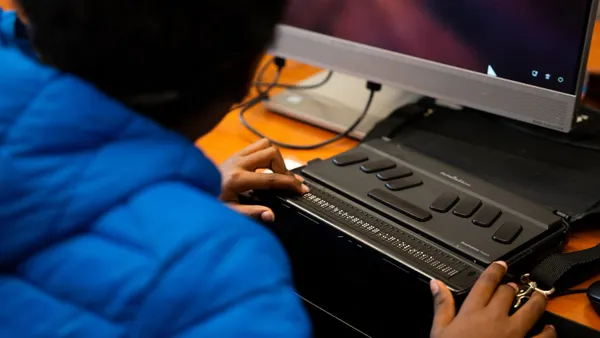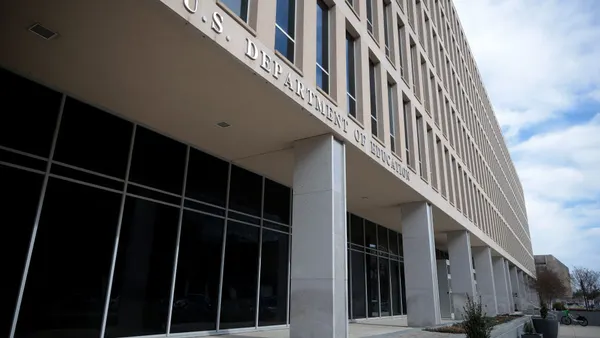Dive Brief:
- The funding and management of costly tech-based personalized learning models continue to be problematic according EdTech: Focus on K-12's coverage of a recent study from the Center on Reinventing Public Education (CRPE). The study suggests that the efforts are hampered by a misalignment between the goals of classroom teachers and the support they receive from their school districts.
- Another recent study on state funding strategies for innovation in education conducted by national education nonprofit iNACOL, revealed that, as of 2018, almost all states have a form of K-12 competency-based education policy and that 18 of those states have comprehensive policies designed to help districts get the resources they need to support personalized learning.
- More funding for these initiatives is now available under the Every Student Succeeds Act (ESSA), specifically under Title IV (Student Support and Academic Enrichment Grants), which received a boost this year, and Title II grants. However, more philanthropic organizations are also offering help and resources for implementation.
Dive Insight:
While more schools are turning to personalized learning models, the success rate varies widely depending on implementation and support. In many schools personalized learning has strong support in and is effective in changing instruction. As one principal noted, personalized learning is a "paradigm shift that is bottom-up and teacher led." The recent CRPE study, however, looked at 39 schools in 17 cities across the country over a two-year period and compiled some interesting observations about the challenges that face schools trying to implement personalized learning models. Teachers were often faced with the challenge of being tasked with innovation without proper guidance from principals and proper support from the central office.
“For all their promise, the initiatives’ challenges through the first few years of effort underscore the difficulty of innovating inside a system that was never designed for innovation,” the author wrote. The study also offers strategies for building support, seeking out leaders who are prepared to lead innovation, and collaborating with partners, including local charter schools, who are “poised for innovation.”
The good news is that funding sources for such innovation are more available through the increased flexibility of ESSA funds, which provide opportunities not only for increases in educational technology resources, but also for professional development and training in implementation of those resources. Looking at how other states are funding innovation may inspire some new ideas on the issue. EdSurge has created a guide to examine what personalized learning looks like in each state. While the promise of personalized learning has so far shown some success and attracted philanthropic interests, the sketchy implementation of the model has some experts wondering how long this support will last. While school districts can seek this support, it may be that building local partnerships would pay off better in the long run.










